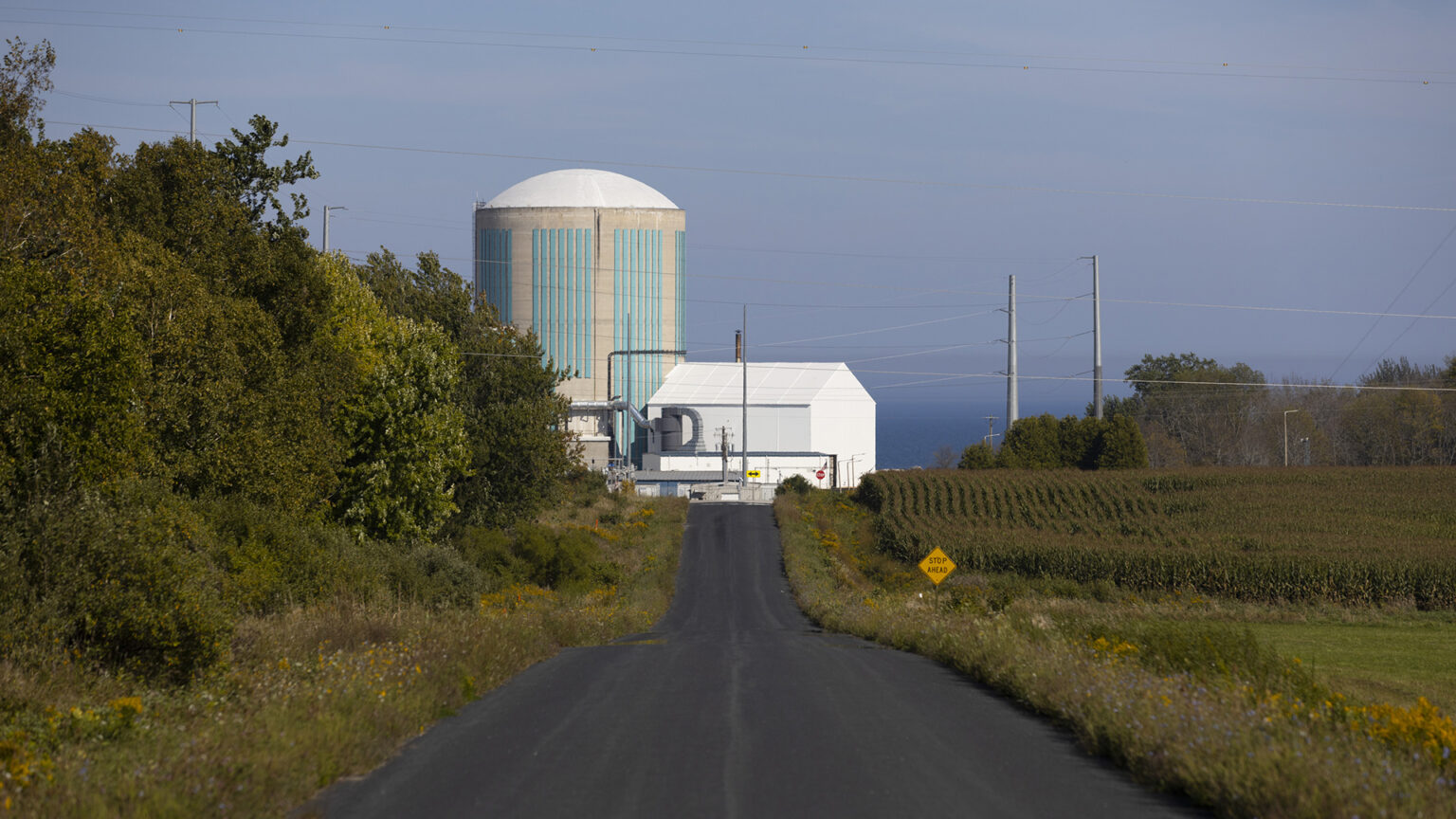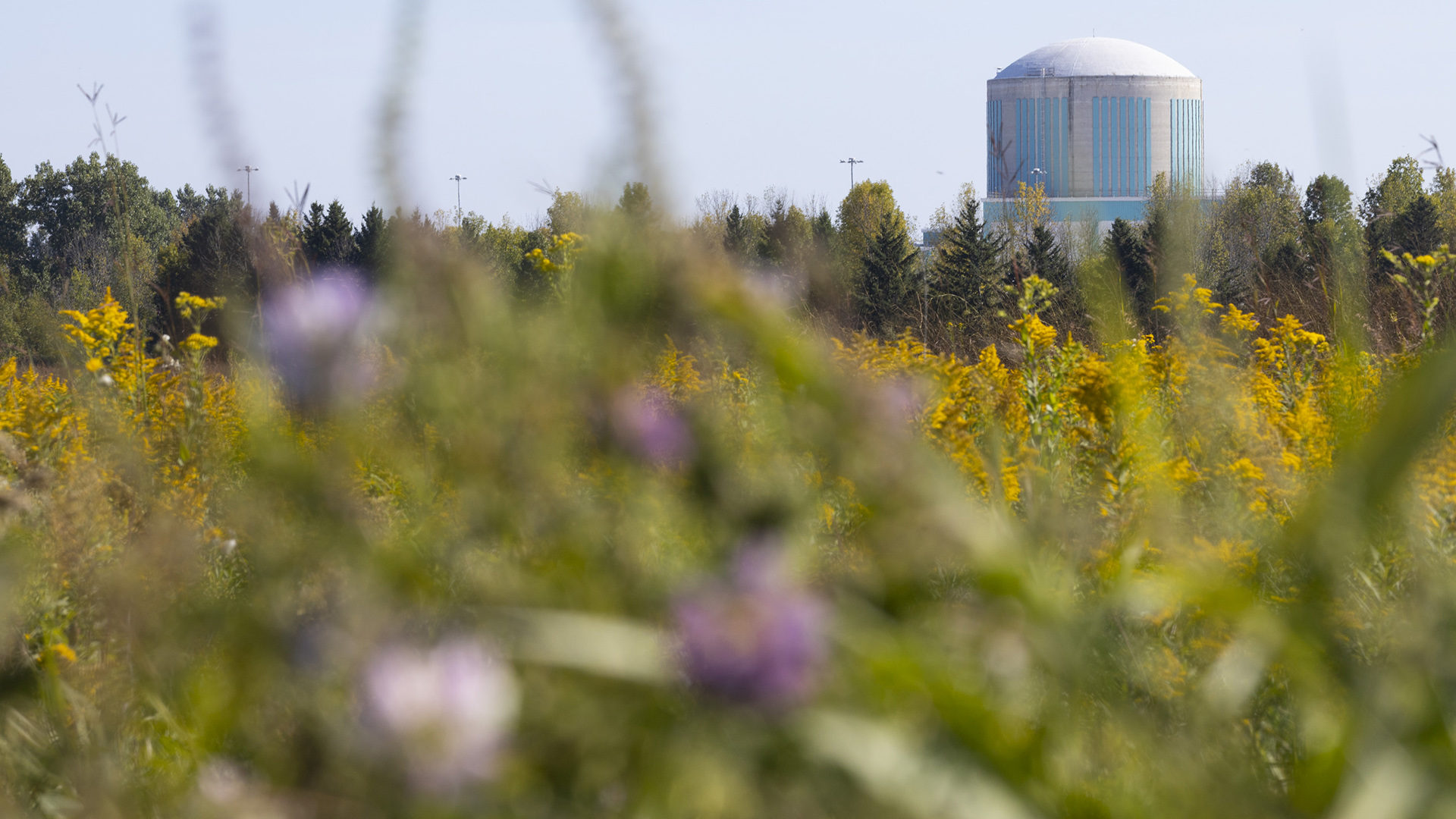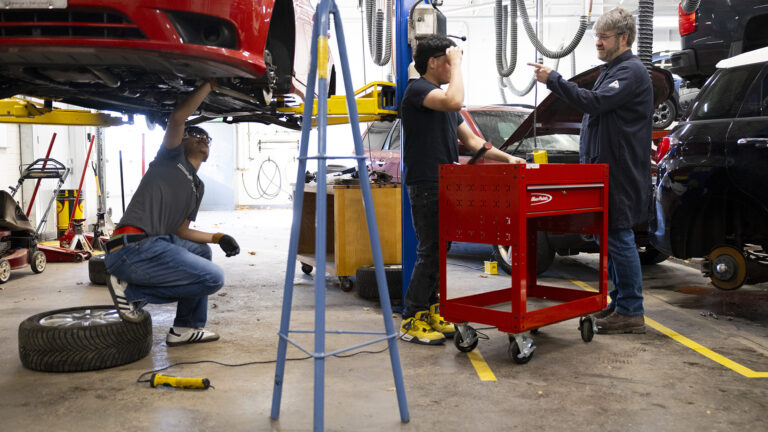What nuclear power returning to Kewaunee County means for Wisconsin's workforce
Thousands of workers will be needed to construct a new nuclear plant at the Kewaunee Power Station, as well as nuclear, electrical, civil, chemical and mechanical engineers to design and operate the new reactor.
Wisconsin Watch
October 15, 2025 • Northeast Region

Officials from the University of Wisconsin-Madison say there's already a pipeline of workers who could operate a new nuclear plant at the Kewaunee Power Station. (Credit: Joe Timmerman / Wisconsin Watch)

This story was produced and originally published by Wisconsin Watch, a nonprofit, nonpartisan newsroom.
In a small farming community off the shore of Lake Michigan, Kewaunee County’s nuclear power plant has sat lifeless for over a decade. But increased demand for power driven by artificial intelligence and data centers could change that.
Plant owner EnergySolutions and WEC Energy Group are asking the U.S. Nuclear Regulatory Commission for approval to build a new nuclear facility at the site. If it is granted, officials expect construction could begin in the early 2030s and the plant could come online by 2040. The process would likely require labor from thousands of workers, WEC spokesperson Brendan Conway said.
Wisconsin Watch asked two professors in the University of Wisconsin-Madison’s Department of Nuclear Engineering & Engineering Physics how this might impact the local workforce and economy.
Here’s what to know.
Does Wisconsin have enough nuclear engineers for a new plant?
Bringing a new power station online means Wisconsin would need more nuclear engineers to design and operate the plant.
Department chair Paul Wilson and assistant professor Ben Lindley believe there is a ready pipeline of qualified workers in the state to keep up with that added demand.
UW-Madison “pumps out” nuclear engineers, but Wisconsin has only one nuclear plant located in Two Rivers, Lindley said. This leaves some graduates to look for employment in other states.
“A lot of them want to stay in the state, and so having more job opportunities would certainly help,” Lindley said.
While there is increased interest in nuclear engineering professions today, Lindley said, the industry does have a gap that is harder to fill: workers in their 40s.
Many people who flocked to nuclear engineering in the 1970s and 1980s are now retiring, leaving a gap between aging workers and those entering the workforce. The profession has the challenge of training up these younger workers while trying to hang onto older employees for as long as possible.
“When we stopped doing nuclear in the U.S. and elsewhere in the West, there’s that gap in skills of people who weren’t really trained up in the ’90s,” Lindley said. “That’s a trickier one to fill. And the whole sector has that problem.”
There were 78 nuclear engineers employed in Wisconsin in 2022, the most recently available state data shows, and the workforce was projected to shrink by seven jobs by 2032. Those in the occupation made a median salary of $106,740 in 2024. Nuclear engineers typically need a bachelor’s degree in nuclear engineering or a related field at minimum.

“If you bring in an employer like that who is paying, you’re going to see development,” said Kewaunee resident Dan Giannotti of a new nuclear plant. “You’re going to see new homes being built and more businesses move in. Because right now, we’re just stagnant. Nothing’s happening to speak of.” (Credit: Joe Timmerman / Wisconsin Watch)
What other workers will be needed?
In the grand scheme, nuclear engineers are likely the minority of workers who will be needed if a new plant opens, Lindley said. The construction and the operation of the plant are distinct phases that will require a healthy mix of blue- and white-collar workers.
While Kewaunee Power Station is still standing, EnergySolutions has been decommissioning it — cleaning up nuclear waste and radioactive materials to dismantle the plant — since 2022, meaning the old reactor will not be brought back online, Conway said. It would be a new facility, requiring the construction of a nuclear reactor.
The companies will need electrical, civil, chemical and mechanical engineering workers to design and operate the new reactor. They’ll also need many people in the skilled trades, such as electricians, welders, pipefitters, and other construction workers to carry out the project.
“What you’ve seen in other plants like this is, it’s a blend of training local people, sourcing from firms that are already in the state, including construction firms, and then also they’d probably need people coming in from outside in the building phase, as well,” Lindley said. “That’s just because of the amount of people you need, and it’s also the skills that you need. Ideally, you want construction firms involved who have been involved in other nuclear construction projects.”
This is where Wisconsin’s skilled labor shortages may be felt the most. The state has struggled to meet the demand for labor in such professions.
“You need a lot of people in the skilled trades,” Wilson said. “This is a national concern – of whether we can keep up the pipeline of workers.”
That’s why employers have sought to push more prospective workers into apprenticeships, or programs that combine paid, on-the-job training with employer-sponsored classroom learning at a technical college. Apprenticeship participation hit an all-time high in 2024, with construction apprenticeships topping the list. However, Wisconsin still lags neighboring states in apprenticeship participation.
The Wisconsin Department of Workforce Development includes construction workers, welders and electricians on its “hot jobs” list — which names well-paying, high-growth jobs. It estimates the occupations have a combined 6,000 jobs open annually.
Who trains people for this work?
Many institutions could play a role in preparing workers for the roles needed at a nuclear power plant.
Roughly 30 students graduate annually from UW-Madison’s nuclear engineering program.
Lakeshore Technical College in Cleveland has been training workers who have hands-on experience at the Kewaunee Power Station, despite it being nonoperational. The college partners with EnergySolutions to supply workers for the decommissioning process. Company officials have said the partnership allows people to work at the plant for several years and then take their skills to other nuclear facilities.
Beyond this, there’s been a “chicken and egg” problem when it comes to expanding nuclear energy job training, Wilson said. Without a growing industry in the state, it’s been difficult to justify having more programs at higher education institutions. But that could change once Kewaunee Power Station’s future becomes clear.
“If we were to have signals that these things would be growing, then I think we could do a lot of work,” Wilson said. “We would be eager to engage, from the University of Wisconsin here to some of those technical colleges to help them stand up and set up programs to make sure those people are prepared.”
Some skilled trades workers would also likely undergo further on-the-job training, Wilson said, because there are usually nuclear- and site-specific requirements beyond the typical union-based training to work at a power plant.
Miranda Dunlap reports on pathways to success in northeast Wisconsin, working in partnership with Open Campus.
This story was produced as part of the NEW (Northeast Wisconsin) News Lab, a consortium of six news outlets.
![]()
 Passport
Passport











Follow Us